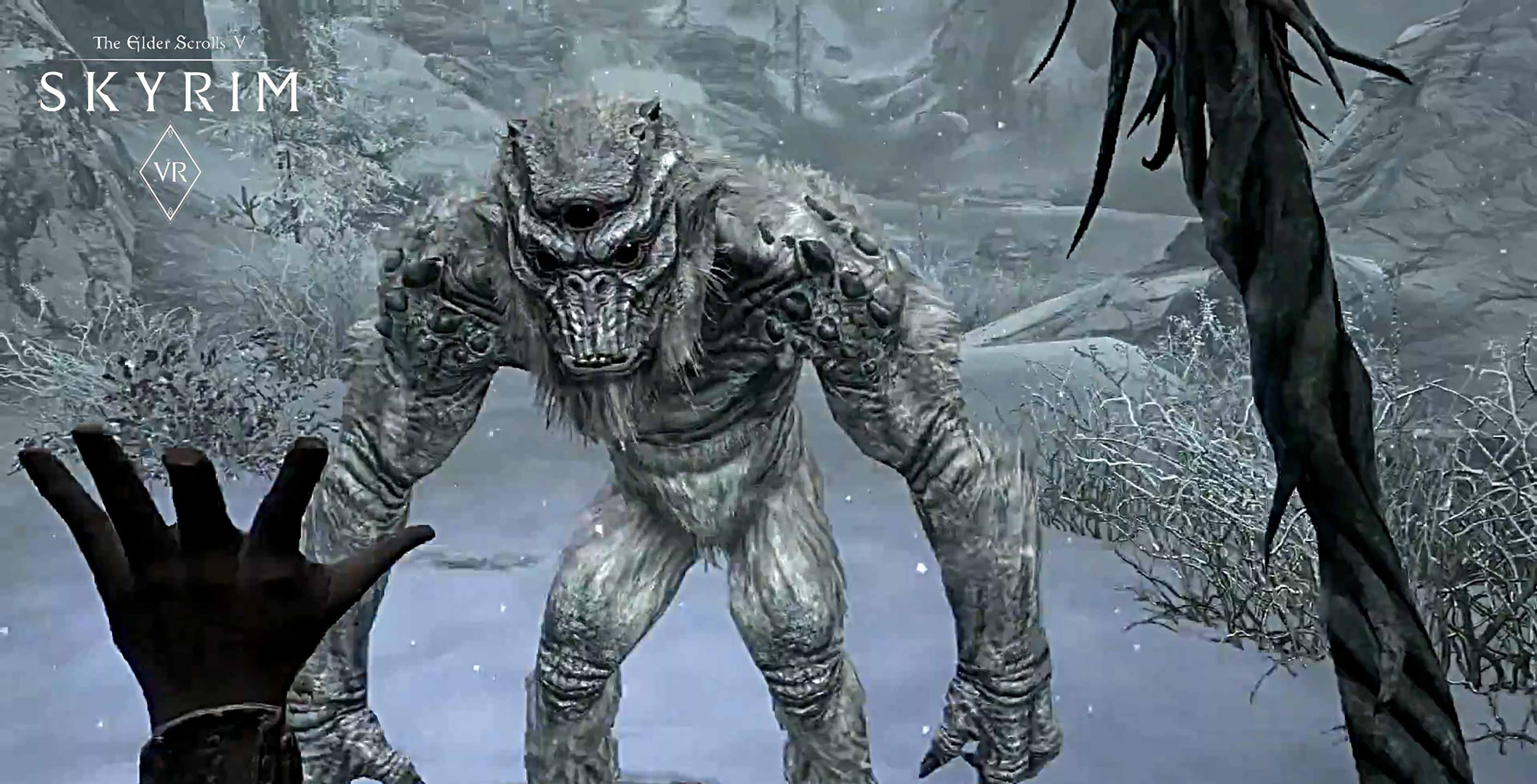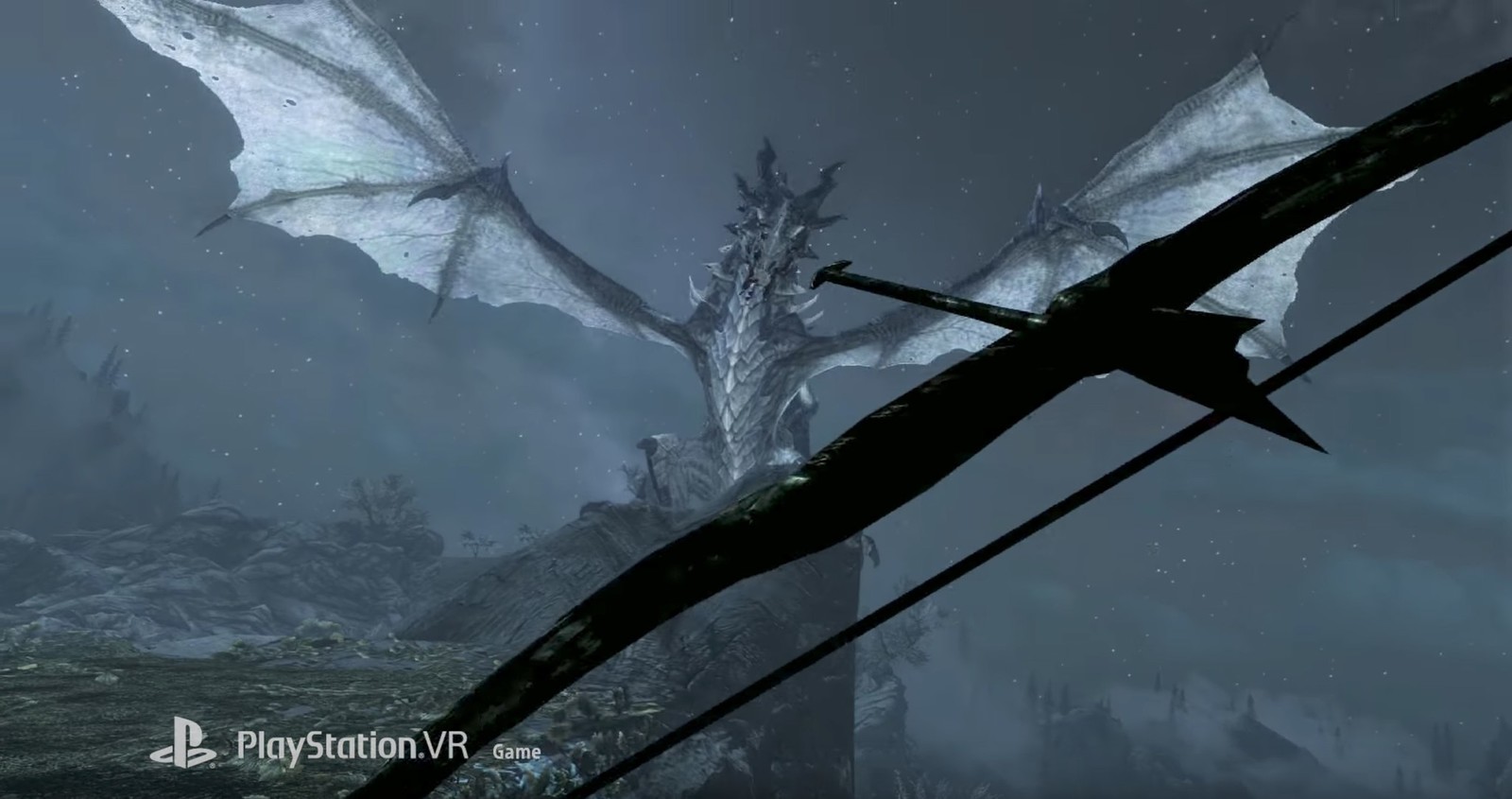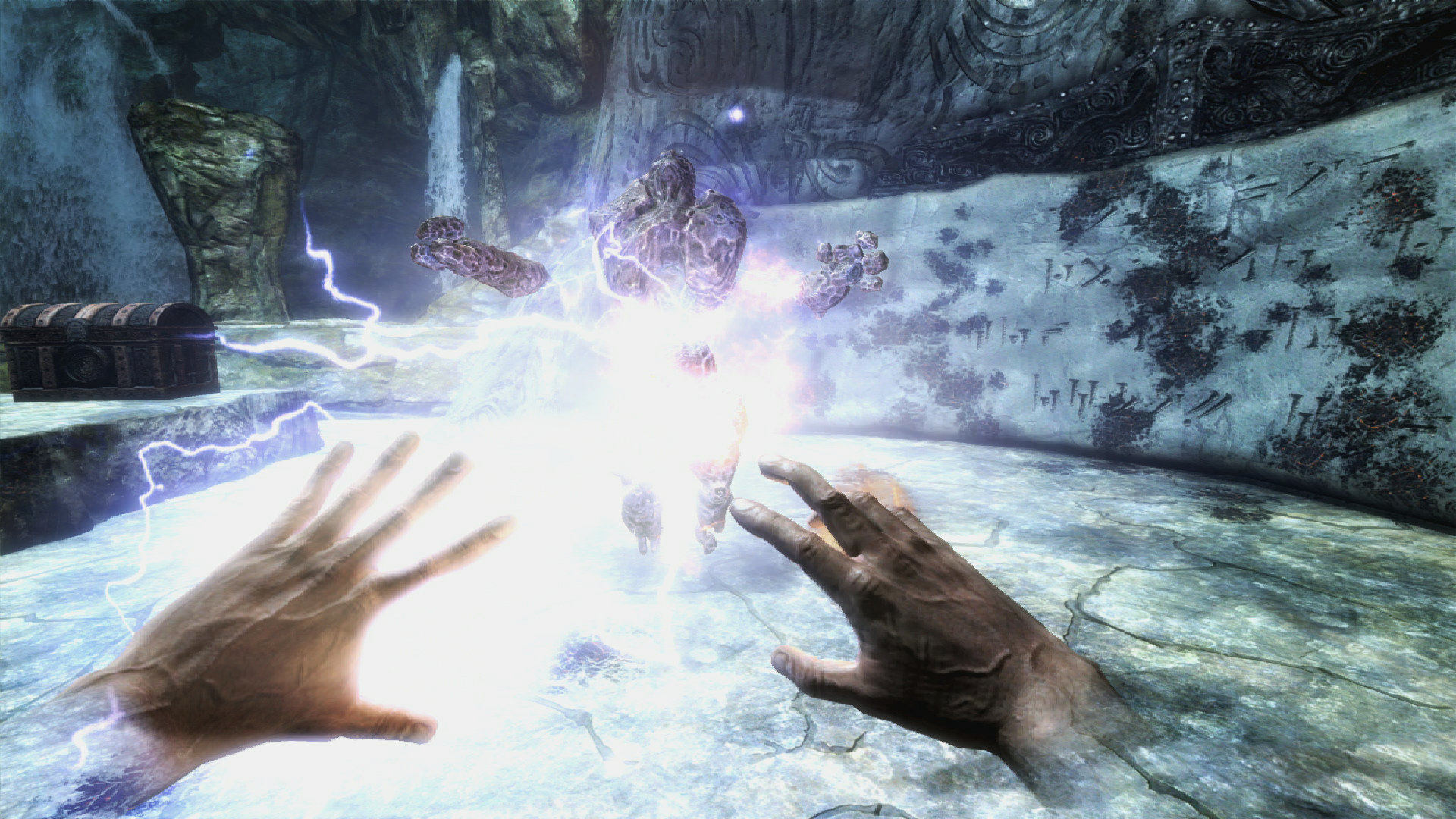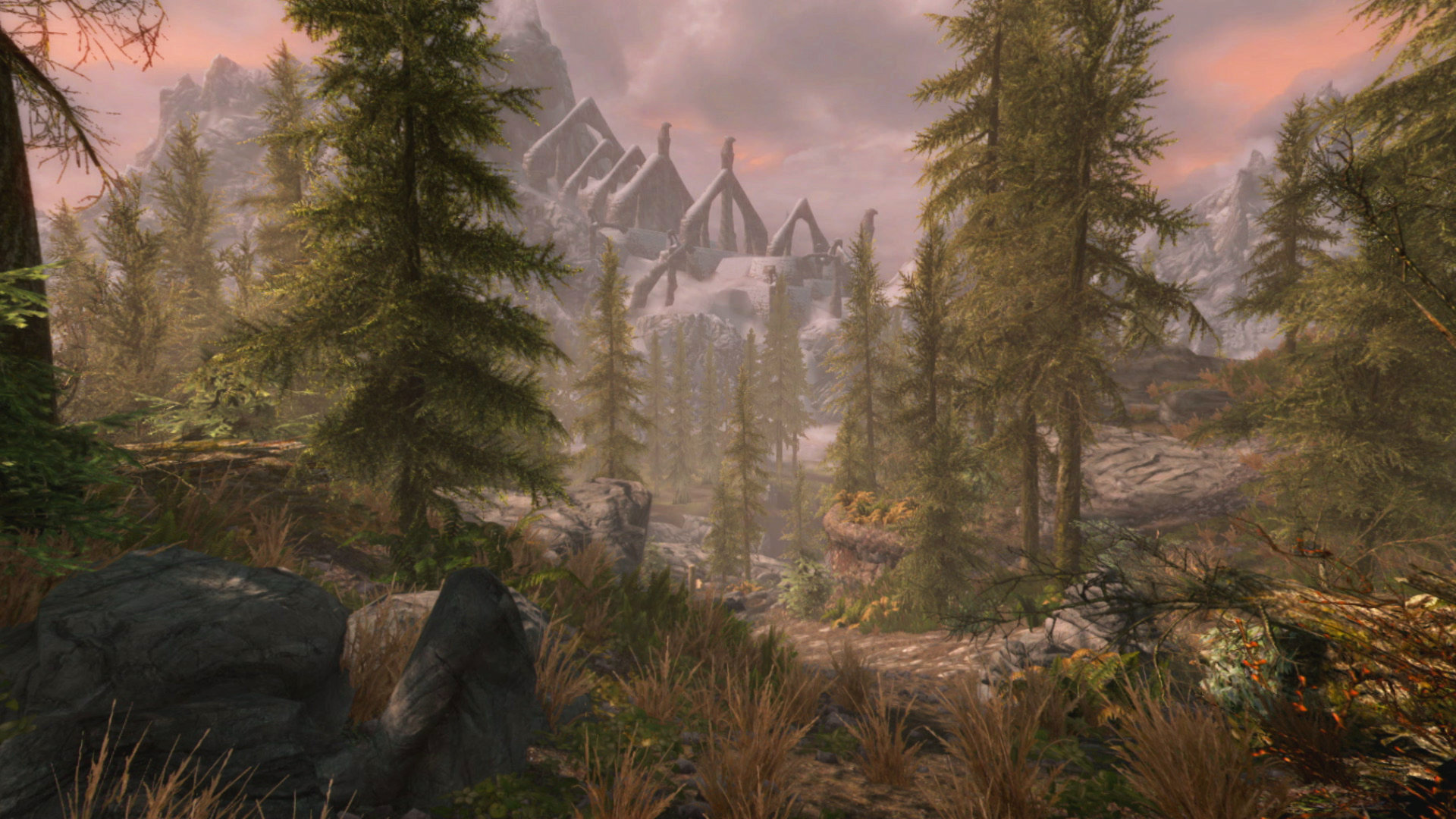
While virtual reality technology can be great at providing shorter, lighter experiences, there aren’t many lengthy, meaty offerings that can draw players in for more than a few hours.
With that in mind, Bethesda (along with the Texas-based Escalation Studios) has gone to great lengths to bring its massively popular The Elder Scrolls V: Skyrim to the PlayStation VR.
Impressively, this isn’t some watered down alternate version of the original 2011 open-world RPG — instead, it’s the complete base Skyrim experience, plus the Dawnguard, Hearthfire and Dragonborn expansions.
Therefore, you’ll be treated to the same wonderfully detailed and breathtaking world, vast assortment of quests, weapons and spells and deep RPG progression systems found in the original Skyrim game. What’s more, seeing the continent of Skyrim from a virtual reality headset brings it to life in a way that consoles and PCs could never fully do on their own.
The world feels even grander and more majestic in VR, feeling even more like a living, breathing place. Alongside Jeremy Soule’s timeless incredible score, every trek I made through snowy mountains, dreary dungeons and wooded forests felt all the more immersive thanks to the PS VR. The sense of exploration and adventure is truly enhanced through the lends of a VR headset.
And that’s to say nothing of the dragon battles, one of Skyrim‘s defining features. Simply put, encountering the large, scaled and winged creatures is equal parts awe-inspiring and terrifying when they swoop in right in front of you. I could practically feel the heat of the dragon’s breath as it spewed fire all around me.
However, there are some concessions that had to be made in order to get this running in PS VR. The visuals take a rather significant hit, coming off as rather blurry and grainy, particularly with character models. It knocks the grandiose world down just a peg, but to be fair, Skyrim wasn’t ever known for being a particularly pretty game, anyway, so the lower resolution doesn’t make too much of a difference.
Movement can also feel somewhat restricted, depending on whether you use your PS4’s DualShock 4 controller or optional PlayStation Move controller accessories. If you’re using the former, walking and running is handled simply by using the analog stick as you would in any other game.
With the Move controllers, though, you’ll move using the “point-and-teleport” control scheme that’s standard in many VR games. By holding the centre ‘Move’ button, you’ll aim a green arc that marks where your character will warp to.
The one benefit to this control scheme is that it makes movement quicker than in other versions of Skyrim. Short, quick warps can have you rather seamlessly traversing the otherwise massive continent of Skyrim at a much faster pace. You can aim your arc farther away to increase your warp distance at the cost of some stamina as well. On the flip side, as with many VR games, this is a rather immersion-breaking way of getting around, and I personally didn’t like using it much because of that.
With the Move controllers, weapons and spells support full Motion control. This is somewhat of a mixed bag overall. On a surface level, moving your hands to attack with swords and block with shields is satisfying enough, in a Wii Sports boxing sort of way. That said, Skyrim‘s core melee combat has always felt clunky, and VR does little to improve upon that. Ultimately, I found it more comfortable to use the standard DualShock 4 buttons when using melee weapons in combat.
Magic, on the other hand, feels absolutely great in VR. Thanks to individual hand tracking, you can even shoot spells at enemies in different directions, offering a level of precision not found in the base game. It’s a solid power fantasy, making me feel very much like Emperor Palpatine using his devastating Force Lightning on Luke Skywalker in Return of the Jedi.
Likewise, the basic act of aiming a bow and arrow feels even better with the Move controllers, offering that added level of immersion that the DualShock 4 controllers simply can’t produce. Using motion controls to nock an arrow with one hand and fire it from the bow with the other is quite intuitive. However, once you engage in heated combat, the action becomes too chaotic for the control scheme to be a viable option.
To try it out, I shot a villager in Skyrim‘s first town, Riverwood, which prompted the local guards to attack me. Warping around to try to avoid projectiles and gain a better tactical position felt terribly clunky, and I soon found myself killed by guards who were far more maneuverable than I was.
Similarly, trying to turn and aim spells against groups of enemies can be overwhelming and too difficult to carry out. Thankfully, the DualShock 4 makes combat feel perfectly fine to control, while at the same time offering some VR enhancements, like aiming a bow and arrow by moving your head.
Menu navigation is also incredibly cumbersome using the Move controllers. As is the case with using Move controllers on the PS4 home screen menus, in Skyrim VR you’ll have to hold a trigger button and flick your wrist to toggle through different options, making it too finicky at times to select the right item. Using the DualShock 4 makes scrolling through menus far more simple, which is something you’ll be doing a lot in a RPG as dense as Skyrim.
Perhaps the biggest problem with the dual-control scheme, though, is the fact that you have to be in the main menu to choose which one you want to play with. As a result, you’ll have to quit the game, return to the main menu, select PlayStation Move or DualShock 4, then load back up your save if you ever want to try to the other gameplay method. Not only does this summarily kill the immersion of the experience, it also forces you to once again sit through same loading screens as well.
Having the ability to freely switch between Move controllers and DualShock 4 in-game would have been a welcome addition, as both control options offer their own benefits depending on the situation. As it stands, I pretty much exclusively used the DualShock 4, both due to its ease of use and to avoid having to quit the game mid-session to give the PlayStation Move another chance.
It’s worth noting that playing as massive a game as Skyrim in VR felt very natural overall. I didn’t experience any motion sickness or other physical unease while playing for a couple of hours at a time. It remains to be seen if anyone will want to play through the full 100-plus hour experience wearing a VR headset, but I certainly look forward to sinking more time into the game nonetheless.
Because the technology is still rather in its infancy, full-length VR experiences like Skyrim can be rough around the edges, with downgraded visuals and clunky controls somewhat hampering the experience. But if you can look past these imperfections, Skyrim VR brings back some of the wondrous magic that players felt in 2011 when they stepped into Bethesda’s glorious world the first time around. There is nothing quite so captivating as setting foot in a world as well-realized as Skyrim from the perspective of virtual reality. Fus Ro Don’t turn your back on this one.
The Elder Scrolls V: Skyrim VR is currently available exclusively on PlayStation VR. However, while Bethesda hasn’t officially confirmed versions for the HTC Vive or Oculus Rift, the company says that “additional platform support” will come sometime in 2018.
Image credit: Bethesda
MobileSyrup may earn a commission from purchases made via our links, which helps fund the journalism we provide free on our website. These links do not influence our editorial content. Support us here.






